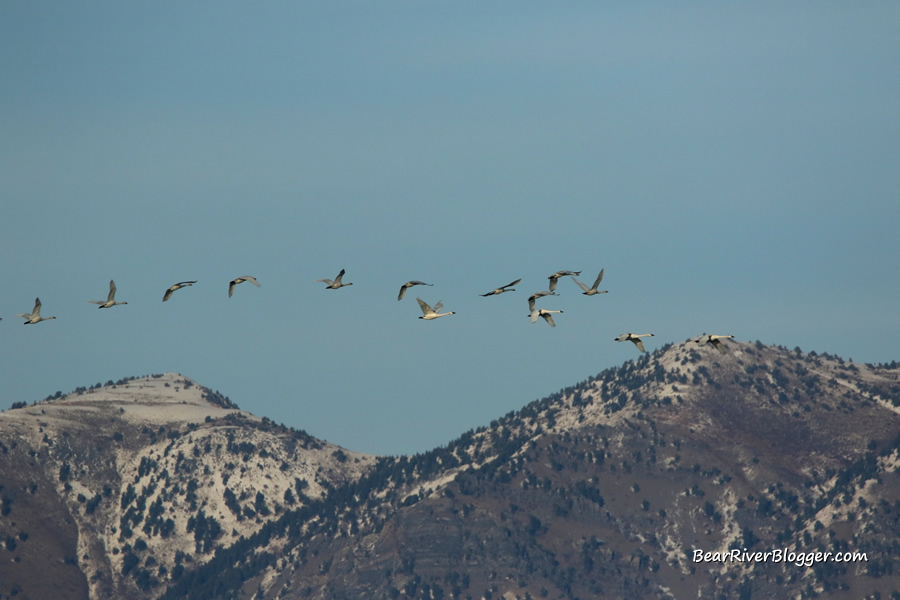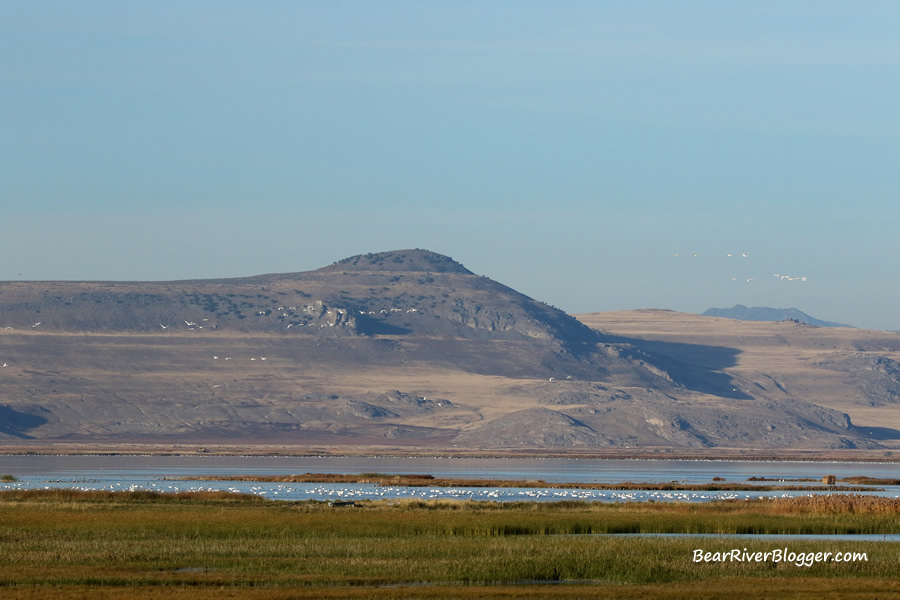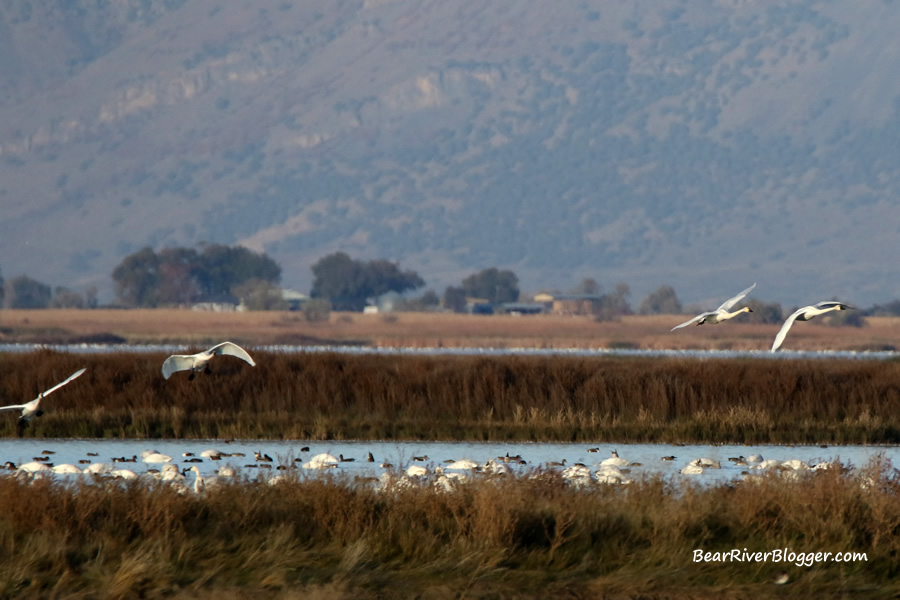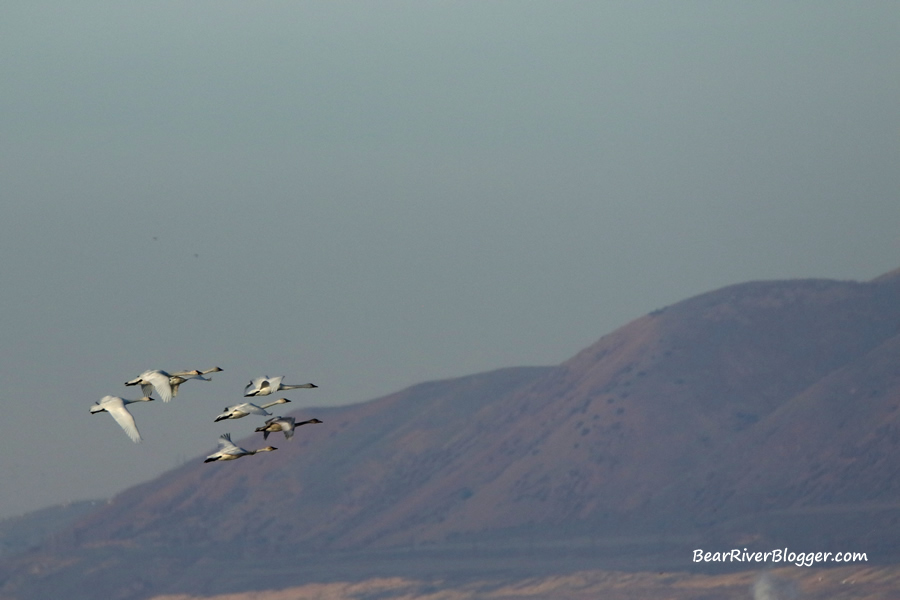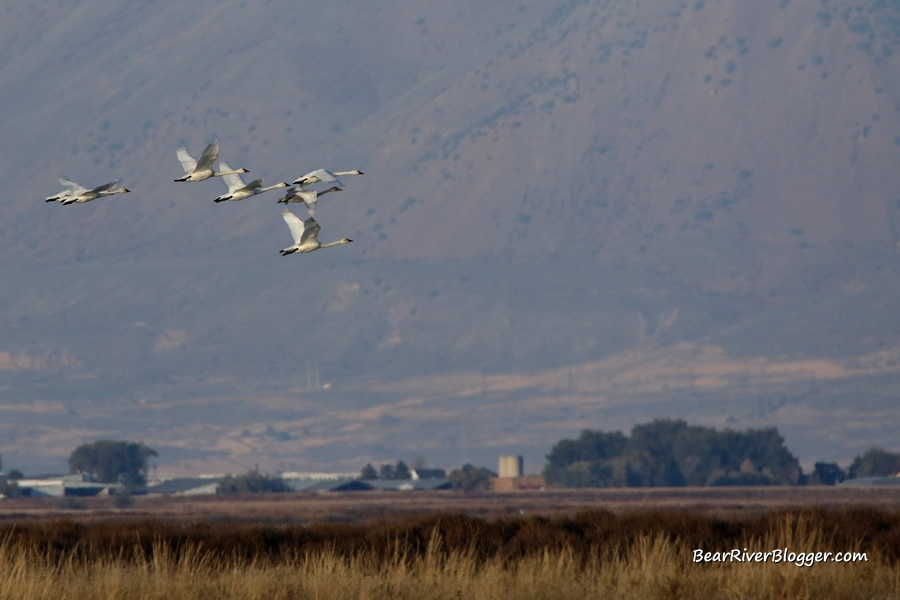If it seems like both my website and YouTube channel are currently focused on tundra swans at the moment that’s because they most certainly are and for a good reason I might add, tundra swans are just an incredible bird to both watch and photograph.
The tundra swan fall migration is in full swing right now and for the next few weeks, peaking sometime during the middle of November, swan numbers here in northern Utah will only continue to rise, almost daily in fact, as thousands upon thousands of these majestic birds work their way to northern California for the winter.
And what that means for birdwatchers like you and me is simple, now is the time to go enjoy these beautiful birds before they are gone and we have to patiently wait until spring migration beacons the call and returns the swans to the Great Salt Lake wetlands, especially places like the famous Bear River Migratory Bird Refuge auto tour route where they are easily viewed and photographed, for a few weeks on their long migration back to their breeding grounds in the far northern reaches of Alaska.
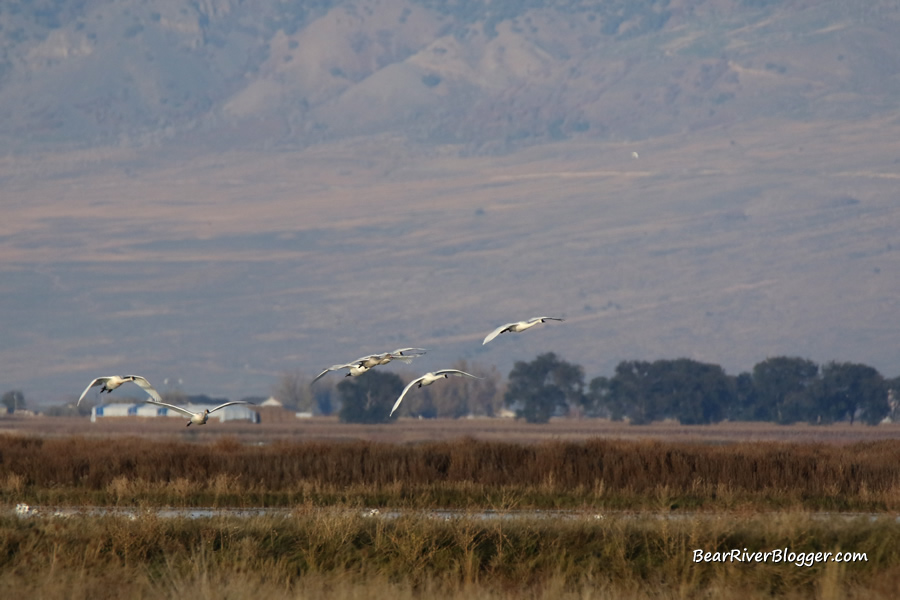
But I’ll be honest here, as a birdwatcher I am going to say fall migration isn’t the best time to view and photograph the migrating tundra swans on the Bear River Migratory Bird Refuge.
The last few weeks of winter actually is far better, from my own experience that is, to view and photograph the tundra swans, particularly during late February and early March when the ice is just starting to melt and the wetlands begin to open up once again on the refuge auto loop and the swans are migrating back north.
Truthfully, the sole reason for that is hunting pressure during fall migration on the Bear River Migratory Bird Refuge pushes most, if not all, of the tundra swans into distant areas on the refuge and surrounding wetlands making birdwatching and photography, well, pretty bleak at best because these areas are actually designated waterfowl “rest areas” and closed to the general public.
It’s not to say you can’t find, view, and even photograph tundra swans during fall migration on the refuge, you most certainly can as all of the images for this particular blog post, including the short photo gallery below, were captured yesterday from the two locations I am going to show you with this blog post.
What it does mean, however, is the chances of finding any swans in close proximity to the auto tour route road during fall, something that’s very common during spring migration mind you, and in plain view without the aid of a spotting scope, binoculars, or a 600mm camera lens like I used on these images are pretty slim to none since the auto tour route itself, i.e. unit 2, is open to waterfowl hunting, including tundra swans.
The best location to view and photograph tundra swans during fall migration isn’t actually on the Bear River Migratory Bird Refuge itself or anywhere along its famous 12-mile auto tour route but is located about a half-mile before you get to the main gate on the lower section of Forest Street.
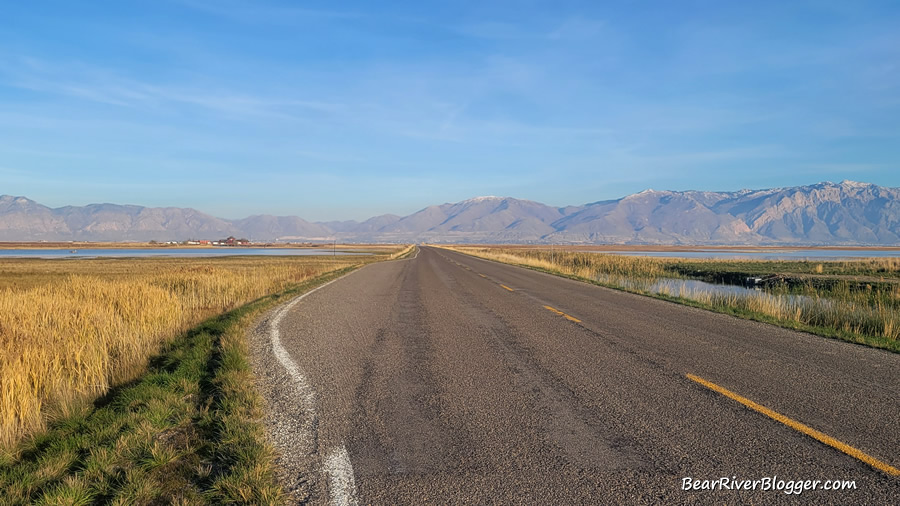
There’s both a large, paved parking lot on the river where the boat launch is and also a small section eastward on Forest Street where a pullout was placed for cars to park off of the main roadway.
I was at the small pullout yesterday and could view thousands of tundra swans off to the north across the Bear River.
Keep in mind though that Forest Street is a very busy roadway this time of year due to hunting season so any stopping on the road needs to be done with caution and that is why I use the pullout to view the swans.
The other location that gives a decent vantage point to view the tundra swans is on the refuge where the auto tour route begins and a wildlife viewing tower was erected a few years ago with the help of the non-profit group Friends of the Bear River Refuge.
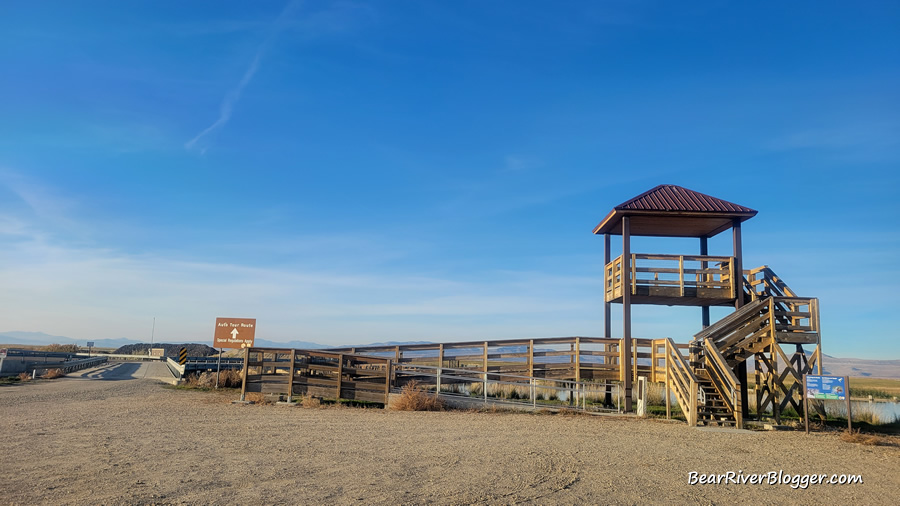
The swans are still off in the distance to the north but by climbing the viewing tower you get a good view of the swans and the surrounding wetlands, it’s a pretty interesting vantage point to see the terrain I must admit.
Last night as I was attempting to photograph the sunset a bit east of the bird refuge the sky was filled with tundra swans just as the sun was setting behind the Promontory Mountains so for about 5 minutes anywhere on Forest Street was actually a good place to view the swans as they took to the sky to find places to feed during the night.
It was just way too dark to capture any usable swan images so I just sat there and enjoyed the sights and sounds of the tundra swans and the setting sun all at the same time.
So take it for what it is worth and I hope this helps anyone wanting to visit the Bear River Migratory Bir Refuge to view or photograph the migrating tundra swans, the best place to view the swans this time of year is on Forest Street or from the wildlife viewing tower on the refuge just inside the main gate.
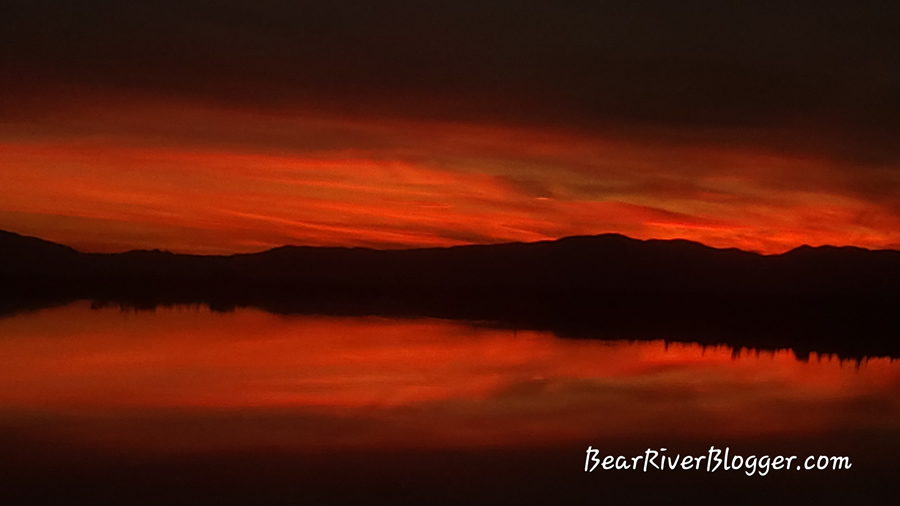
I still travel the refuge auto loop when I have the time as it’s always a nice drive to look for other birds that live on the refuge during winter but just don’t expect to see very many, if any at all, tundra swans on the auto loop during fall like there is when spring migration is underway so keep that in mind.
If you’ve never been to the bird refuge or you have but just want to keep up to date with what’s currently going on, I offer you to head on over to our subscribe page and sign up for email notifications for future blog posts like this one where we share what we find on our nature photography excursions on and off of the famous Bear River Migratory Bird Refuge.
We also offer you to head on over to and sign up for our small but growing Bear River Blogger YouTube channel where we do periodic updates and post short nature clips when we are able to capture them on film.
